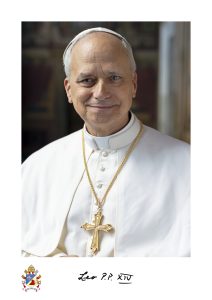
In the annals of Christian history, few naval battles carry the spiritual weight and cultural resonance of the Battle of Lepanto. Fought on October 7, 1571, this clash between the Holy League and the Ottoman Empire not only halted a major Islamic expansion into Europe—it also gave rise to one of the Church’s most beloved Marian feasts: the Feast of Our Lady of the Rosary.
The Battle That Changed the Tide
The 16th century was marked by the relentless advance of the Ottoman Empire. Having already conquered Constantinople in 1453 and much of Eastern Europe, the Ottomans set their sights on the Mediterranean. By 1571, they had taken Cyprus and were poised to strike Venice and Rome, threatening the heart of Christendom.
In response, Pope Pius V formed the Holy League—a coalition of Catholic maritime powers including Spain, Venice, and the Papal States. Commanded by Don Juan of Austria, this patchwork fleet was vastly outnumbered by the Ottoman navy, which boasted superior numbers and firepower, including thousands of Christian slaves forced to row their galleys.
Recognizing the gravity of the situation, Pope Pius V called upon all of Europe to pray the Rosary. Confraternities and lay faithful gathered in churches and homes, invoking the intercession of the Blessed Virgin Mary. On the day of battle, the Pope is said to have mystically perceived the victory from afar, rising from a meeting and proclaiming, “The Christian fleet is victorious!”
The victory was staggering. The Holy League lost 50 ships and suffered 13,000 casualties, but the Ottomans lost over 25,000 men, their commander Ali Pasha, and 210 of their 250 ships—130 of which were captured. The tide of Ottoman expansion was stemmed, and Europe was spared a devastating incursion.
From Victory to Devotion: The Feast of the Holy Rosary
In thanksgiving for the miraculous victory, Pope Pius V instituted the feast of Our Lady of Victory on October 7, attributing the triumph to Mary’s intercession through the Rosary. Two years later, Pope Gregory XIII renamed it the Feast of the Holy Rosary, emphasizing the power of this Marian devotion in times of peril.
Rather than glorifying military success, the new title highlighted the spiritual weapon that secured it: the Rosary. The victory was attributed not to strategy or strength, but to the intercession of the Blessed Virgin Mary, invoked by countless faithful through the prayer of the Rosary. By shifting the focus from “victory” to “Rosary,” the Church underscored that true triumph comes through prayer, humility, and divine grace.
Later, in 1716, after another victory over the Turks at the Battle of Petrovaradin, Pope Clement XI extended the feast to the universal Church. And in 1913, Pope Pius X fixed its date permanently to October 7, separating it from the Sunday liturgy to give it its own solemn observance.
“Pray the Rosary every day to obtain peace for the world.”
Our Lady of Fatima
Whether in battle or in daily life, the Rosary remains a lifeline to heaven. The Feast of the Holy Rosary, born from the smoke of war, continues to shine as a beacon of hope, unity, and divine protection.




Recent Comments